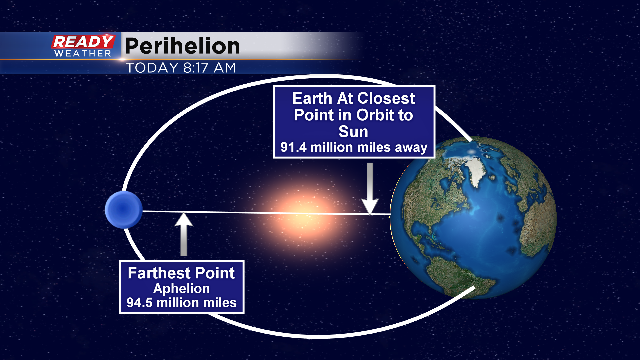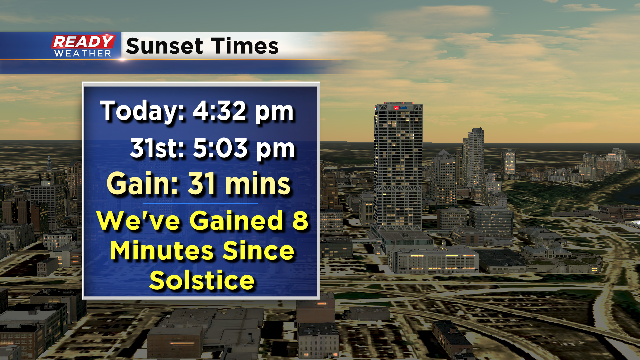More Cold, More Sun
The weather has been plenty cold lately, but we've been treated to a good dose of sunshine. And days will slowly but surely feature more sun as we head through the new year. Speaking of the sun, we just passed the Perihelion! It officially occurred Wednesday at 8:17am. That's when the Earth passes most closely to the sun on its elliptical orbit. It passes by just over 91 million miles from the sun. Crazy to think how far away that really is!
Here's a visual:

Of course, the big weather story has been focused on the cold. As the jet stream has dropped well south of the area, we've sat north of the storm track so it has been cold for sure, but we've enjoyed more sun too.
As we continue through the month you'll also start to notice more sun.
Take a look:

As we look at the Winter Solstice, otherwise known as the first day of winter, it's also our shortest day of the year. Since then, we've only gained eight minutes of daylight. but we'll gain a solid half hour on the sunset by the end of the month. Even though we gain on the sunset our sunrise actually continues to arrive at our latest time at 7:23 am. That too starts to turn around starting next week.
Here's how some of the numbers shake out:
| DATE | SUNRISE | SUNSET | DAY LENGTH |
|---|---|---|---|
| December 9th | 7:12 am | 4:17 pm | 9 Hours 5 Minutes |
| December 21st (Solstice) | 7:20 am | 4:17 pm | 9 Hours |
| Today | 7:23 am | 4:32 pm | 9 Hours 8 Minutes |
| January 31st | 7:08 am | 5:03 pm | 9 Hours 55 Minutes |
So you can see that we first start to gain on our sunset while our sunrise lags, then by the end of the month, we're up about an hour on day length from our shortest day of the year. Good stuff!
If you're really looking for more sun, Daylight Saving time begins on Sunday, March 12th. That's just 66 days away! Sunset will then occur around 7 pm.
I'm meteorologist Rebecca Schuld

